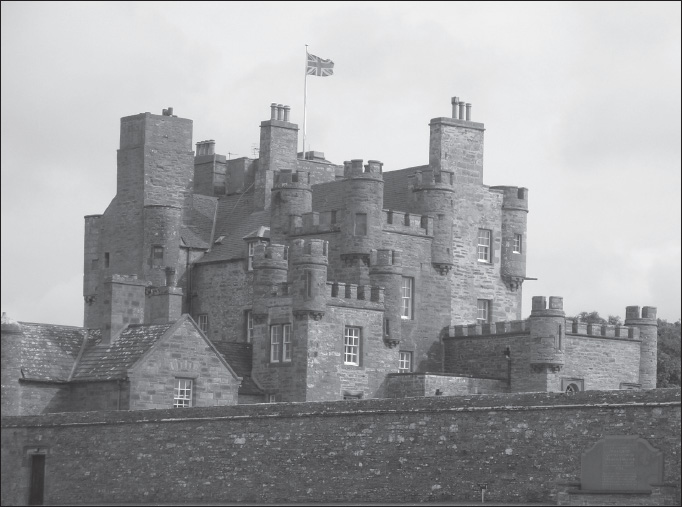12.
What If This Inuk Had Sailed with Franklin?
In September 1839, when Peter Warren Dease and Thomas Simpson were completing their epic boat journey along the northern coast of the continent, a nineteen-year-old Inuk went looking for a visiting whaling captain. Far to the east of the two Hudson’s Bay Company explorers, on tiny Durban Island off the east coast of Baffin Island, Eenoolooapik had heard that Captain William Penny was asking questions about the whale-rich bay called Tenudiakbeek (Cumberland Sound). Eenoolooapik had grown up in that bay on Qimisuk (Blacklead Island). He had already explored much of the east Baffin coast, which faced towards Greenland, and yearned to venture farther.
He located Penny, who was rightly worried about the decline of the Arctic whale fishery. Three times, Penny had tried and failed to find this particular bay. Now, Eenoolooapik or “Bobbie,” as he came to be called, convinced the captain that he could lead him directly to it. When Penny sailed for home in the Neptune, Eenoolooapik went with him. He would become the second Inuk to make his mark in Scotland. In Some Passages in the History of Eenoolooapik, Alexander McDonald—a doctor who later sailed with the adventurer—wrote that Penny brought home a “young Esquimaux of considerable intelligence, from whom, he had reason to think, much additional information might be obtained, not only on the subject of the whale fishery, but also concerning the geography of those partially explored regions.”

This portrait of Eenoolooapik, dressed in the latest British fashion, graces A Narrative of Some Passages in the History of Eenoolooapik, published in 1841. Author Alexander McDonald would soon sail as a doctor with the Franklin expedition.

The Castle of Mey, built around 1570, is situated on the north coast of Scotland, roughly ten kilometres west of John o’ Groats. Eenoolooapik was denied entry in autumn 1839, but the castle and garden are now open to the public most days between May 1 and September 30. The castle featured in episode eight of the Netflix show The Crown.
The Neptune landed on the Scottish coast of Caithness, McDonald writes, near an edifice called the Castle of Mey. Eenoolooapik thrilled to the sight, and asked to see inside the building. “This, however, was denied him by the keeper of the mansion,” McDonald continues, “who, with true Cerberus-like obstinacy, refused to allow the party even to walk round it.”
On the morning of November 9, when Eenoolooapik debarked in Aberdeen, crowds gathered in the harbour to get a glimpse of him. A few days later, on the River Dee, the Inuk gave a display of his kayaking ability. He over-extended himself in the cold water and contracted pneumonia. McDonald, who had graduated from Edinburgh’s Royal College of Surgeons five years after John Rae, declared Eenoolooapik to be suffering “an inflammatory affection of the lungs. It was extremely severe, but it presented no other remarkable peculiarity.”
For the next few months, the young man hovered on the brink of death. Penny had become aware of his intelligence and ability, and had intended to teach him boat building. This plan fell by the wayside. But even from his sick bed, Eenoolooapik showed a sense of humour. The Aberdeen Herald of November 16, 1839, reported that “one of the men at the Neptune’s boiling-house drew the outline caricature of a broad face, and said, ‘That is an Esquimaux.’ Bobbie immediately borrowed the pencil, and, drawing a very long face, with a long nose, said ‘That is an Englishman.’” Eenoolooapik was a gifted mimic. Having recovered from his illness, he demonstrated by behaving like a born gentleman at the theatre, at dinner parties and at two balls in honour of the Queen’s wedding.
Captain Penny tried to interest the British Admiralty in a map he prepared with Eenoolooapik of the whale-rich bay. The governing board took no interest in whaling but, remembering the usefulness of John Sakeouse, did send a small sum to assist the Inuk. On April 1840, the young adventurer sailed with Penny and McDonald on the Bon Accord, carrying numerous gifts for distribution, among them a china teacup and saucer for his mother.
Penny spent the summer whaling, and then, guided by Eenoolooapik, brought the Bon Accord into Tenudiakbeek, which John Davis had called Cumberland Gulf (now Sound). The information Eenoolooapik shared with Penny would transform the Arctic whaling fishery, and launch the colonization by Scottish whalers of Baffin Island.
Meanwhile, McDonald wrote of his friend Eenoolooapik: “If he had ever entertained any thought of returning to Britain with us, it was now evident, from the manner in which he employed himself, that he had abandoned such intention.” Eenoolooapik married and settled at Tenudiakbeek. For several years, he traded baleen with Penny. In these years, too, among his own people, he became a renowned storyteller.
As such, he had still more impact on the story of Arctic discovery, mainly because he profoundly influenced one of his younger sisters: Tookoolito. Inspired by his example, she set out to master the English language and, after sojourning in England, would return to the Arctic to become one of the most crucial figures in determining what happened to the lost expedition of John Franklin. Eenoolooapik died of consumption in the summer of 1847. A brief biography of him, the first ever written about an Inuk, had appeared in 1841. Four years after that, its author, Alexander McDonald, sailed on the Franklin expedition as an assistant surgeon on the Terror.
The question arises: What if? What if, when Penny and McDonald returned to Britain on the Bon Accord, Eenoolooapik had come back with them? Had he been available to the Admiralty, then he, too, would almost certainly have sailed in 1845 with John Franklin. Would his presence have made a difference? Some of the final survivors interacted with Inuit hunters. What if Eenoolooapik had been present to communicate with them?